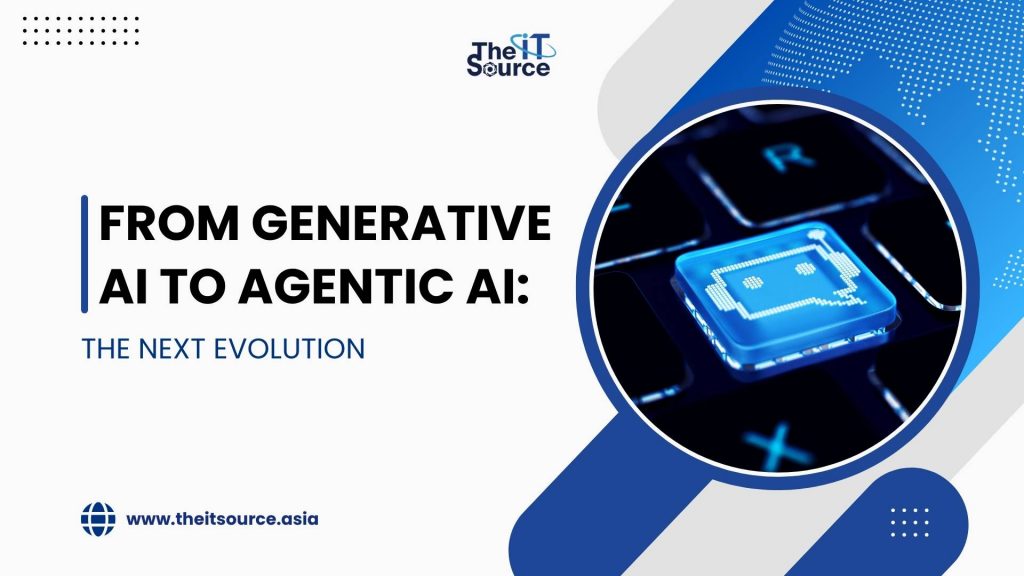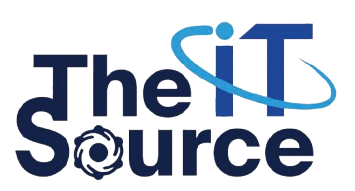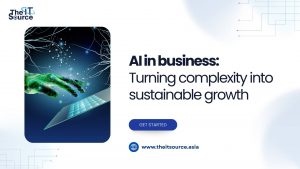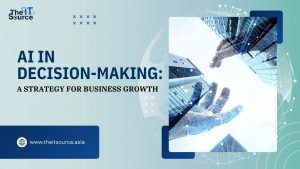From generative AI to agentic AI: The next evolution

Industry leaders and market analysts such as McKinsey agree that the next wave of competitive advantage will be driven not by creating information, but by acting on it autonomously. For years, the conversation has been dominated by generative AI, with models like ChatGPT demonstrating an incredible ability to create human-like content. While powerful, this capability alone is not enough to meet the complex demands of the modern enterprise. For businesses aiming for tangible efficiency, a critical question arises: what happens after the content is created?
The real value lies in execution. This is where the agentic AI evolution begins, marking a pivotal shift from a passive content creator to an active digital teammate. At The IT Source (TIS), our experience in AI-powered process automation and offshore development shows us this is the future. We build intelligent systems designed to reason, plan, and execute tasks across digital ecosystems. This article will break down the differences between Generative AI and agentic AI, explore the tangible business benefits, and offer a strategic roadmap for applying agentic AI to drive real-world results.
Generative AI in the enterprise: Strengths and limitations
To understand the significance of the agentic AI evolution, it is important to first recognize the role Generative AI currently plays in enterprise use. Adoption has accelerated dramatically, unlocking value as a co-pilot for multiple business functions. Its main strengths include the ability to speed up content creation, enable multilingual communication for global teams, and provide a constant source of ideas for strategic planning. Models like ChatGPT or DALL·E demonstrate these strengths by generating fluent text, translating across languages, or designing striking visuals in seconds. Reports from leading analysts highlight how widely these capabilities are being applied across industries.
Yet the core architecture of Generative AI also defines its limits. It is inherently passive. While it can produce outputs based on human prompts, it cannot take autonomous action or manage a full workflow. This makes it a sophisticated tool that still relies on people to execute the final steps. For example, a model may generate high-quality content for a marketing campaign, but it cannot independently access your automation platform, segment the audience, and deploy the campaign. This gap between creation and execution is precisely where enterprises start looking for a more autonomous solution.
The rise of agentic AI: What makes it different
Agentic AI represents the critical next step in artificial intelligence, moving the paradigm from passive generation to proactive execution. Unlike its predecessor, its identity is built on three defining pillars: autonomy, reasoning, and execution. This means it is not designed just to provide an answer but to achieve a goal.
At the heart of this capability is tool use. Agentic AI can directly interface with enterprise systems, update records in a CRM, access external databases, or trigger workflows across digital platforms. This enables true workflow orchestration, where an AI agent can manage a multi-step process from beginning to end and make real-time decisions without waiting for human input. For example, an agentic AI can:
- Search proprietary and public data sources for insights.
- Structure and synthesize the findings into a report.
- Generate a presentation with recommendations.
- Distribute the output to relevant stakeholders automatically.
At The IT Source (TIS), we apply these principles through solutions like the AI Worker, which leverages vision AI to read and execute actions on any web application, even when no open APIs are available. Built on our AI agent builder platform, it enables enterprises to automate repetitive tasks with precision and scale. By embedding reasoning and execution into AI, organizations can close the gap between creation and action. The result is greater efficiency, stronger reliability, and sustainable ROI.
Generative AI versus agentic AI: A comparative view
For any enterprise moving toward strategic AI implementation, understanding the distinction between generative AI and agentic AI is critical. While both technologies are transformative, they serve fundamentally different business roles. Generative AI is a powerful content creator, while agentic AI is a sophisticated digital actor designed to reason, plan, and execute tasks across entire workflows.
This table provides a clear comparison:
| Feature | Generative AI | Agentic AI |
| Primary purpose | Creates new content such as text, code, and images. | Executes end-to-end business processes and workflows. |
| Interaction model | Responds reactively to direct human prompts. | Engages proactively and autonomously with digital systems. |
| Level of autonomy | Low, requires step-by-step human guidance. | High, operates with minimal supervision to achieve a defined goal. |
| Use cases | Marketing copy, report summarization, brainstorming, code drafting. | Financial reporting, supply chain automation, IT operations, compliance monitoring. |
| Enterprise impact | Boosts productivity in creative and administrative tasks. | Drives core process optimization and delivers measurable ROI. |
A practical example highlights this difference clearly. A generative AI model can draft a compliance report with precise language, but it cannot independently validate the data sources or securely submit the final document. In contrast, an Agentic AI system can analyze the required data, cross-check it against compliance rules, generate the report, and distribute it to the correct stakeholders without human intervention.
This shift from a supportive tool to an active digital partner has massive economic implications. According to PwC, Artificial Intelligence is projected to contribute up to 15.7 trillion USD to the global economy by 2030. Enterprises that successfully embrace the agentic AI evolution will be best positioned to capture this value.
Real-world applications of agentic AI in enterprises
The value of agentic AI becomes clearest when applied to real-world business challenges. While generative models are excellent at producing content, agentic systems are built to integrate into enterprise workflows and see tasks through to completion. This makes them particularly transformative in industries where efficiency, compliance, and scalability are non-negotiable.
- Finance: In the high-stakes world of finance, agentic AI automates critical reporting by pulling data from multiple systems, reconciling figures, and submitting reports according to strict regulatory deadlines. This not only reduces human error but also ensures a transparent and auditable process.
- Logistics and supply chain: AI agents are becoming essential for tracking shipments in real time, accurately predicting delays, and automatically triggering contingency plans. A clear example is our project with Proship, a major logistics company. We deployed an AI-powered customer service solution that now manages booking requests, tracks containers, and proactively informs the sales team of new leads through seamless Slack and email integration.
- E-commerce: Online retailers thrive on the ability to manage vast order volumes efficiently. Working with Zalora, we developed a scalable Order Management System (OMS) that serves as the backbone of their operations. Within this system, autonomous AI workflows can optimize backend processing, enabling the platform to handle massive demand across the Asia-Pacific region with greater reliability.
- Operations and IT: One of the biggest operational hurdles is automating tasks on systems without modern APIs. For GiaoNhan247, we implemented our AI worker solution, which automates 80 percent of daily order tracking across platforms like Amazon and eBay. It operates by visually reading and executing actions on web applications, much like a human would, proving that even legacy systems can be intelligently automated.
These use cases show that Agentic AI is no longer a future concept but a practical driver of transformation. By moving beyond content generation and into active execution, enterprises are unlocking new levels of operational resilience and achieving a sustainable return on investment. This momentum highlights why the agentic AI evolution is becoming central to digital strategy across industries.
Compliance, security, and ROI: Why enterprises must care
While the operational benefits of agentic AI are compelling, moving from successful experimentation to full-scale deployment depends on three pillars: robust compliance, uncompromising security, and a clear return on investment (ROI). A strategic approach must address these critical business concerns from the outset.
1. A compliance-first approach
As AI agents operate with greater autonomy, adherence to data protection and regulatory standards becomes non-negotiable. For enterprises serving European markets, this means building solutions that are compliant by design with frameworks such as the General Data Protection Regulation (GDPR) and the emerging EU AI Act. A compliance-first mindset ensures that automation is efficient, trustworthy, and legally sound.
2. Security by design
Granting autonomy to AI systems requires an equal focus on security. To mitigate risk, enterprises must prioritize solutions that provide full data transparency and control. On-premise deployment models are particularly effective. They ensure that sensitive data is processed within the organization’s own secure environment. This reduces external exposure and keeps operations aligned with strict internal security protocols.
3. A clear path to ROI
The success of any AI initiative is measured by its financial impact. The business case for agentic AI is built on automating high-volume and repetitive tasks. This lowers operational costs and accelerates core processes. Beyond cost reduction, agentic AI frees human talent to focus on strategic and high-value work. It transforms operational units from cost centers into strategic drivers of innovation and profitability. This shift explains why the agentic AI evolution is becoming central to enterprise strategy.
Strategic roadmap: Moving from generative AI to agentic AI
Transitioning from generative tools to a fully integrated Agentic AI strategy is a journey. It cannot be achieved overnight. A phased approach ensures adoption is secure, effective, and delivers sustainable value. For enterprise leaders, the following four-step roadmap provides a practical guide.
Step 1: Audit and assess current AI use cases
Begin by mapping where and how AI is currently used in the organization. This includes officially approved tools as well as “shadow IT” adoption by teams experimenting with generative models. The goal is to identify where these tools improve productivity and where they create bottlenecks. This baseline highlights gaps and helps prioritize the next steps.
Step 2: Identify high-impact workflows for autonomy
With the current state mapped, turn to workflows with the greatest potential for automation. Focus on processes that are repetitive, rule-based, and span multiple systems. These are often in finance, logistics, and operations. Prioritize pilot projects that can deliver quick wins and measurable ROI.
Step 3: Launch a pilot program with compliance guardrails
Choose one of the prioritized workflows and run a controlled pilot. Start with a well-defined, non-critical process to test the technology safely. Build a cross-functional team that includes IT, legal, and business stakeholders. This ensures that the pilot operates under strict security and compliance guardrails. A successful pilot builds confidence and a strong business case for wider adoption.
Step 4: Scale and measure with clear KPIs
Use the results of the pilot to guide expansion. Develop a broader rollout strategy, but scale gradually. Track outcomes against clear Key Performance Indicators (KPIs). Measure improvements in process speed, cost savings, error reduction, and employee time saved. These metrics ensure the Agentic AI strategy stays aligned with business goals and continues to deliver compounding value.
Following this roadmap allows enterprises to move beyond generative tools and adopt the agentic AI evolution with confidence. With careful planning, strong compliance guardrails, and measurable KPIs, organizations can unlock efficiency today while laying the foundation for long-term growth.
Conclusion
While Generative AI has proven its value in boosting creativity and productivity, for the modern enterprise, it is only the first step. The next stage of artificial intelligence is defined by execution. Agentic AI brings autonomy, reasoning, and action into the core of your operations, transforming AI from a simple content generator into a trusted digital partner that delivers measurable business outcomes. For leaders in finance, logistics, IT, and trade, adopting this technology is no longer about following a trend. It is about building a foundational advantage through operational resilience, unwavering compliance, and sustainable growth. Making this transition requires a partner with proven expertise in both secure AI deployment and enterprise-grade software development. At The IT Source, we design and implement agentic AI systems that are compliant, secure, and relentlessly focused on your ROI.
Contact us today to explore how the agentic AI evolution can transform your business. Together, we can position your enterprise for long-term success.


 日本語
日本語
